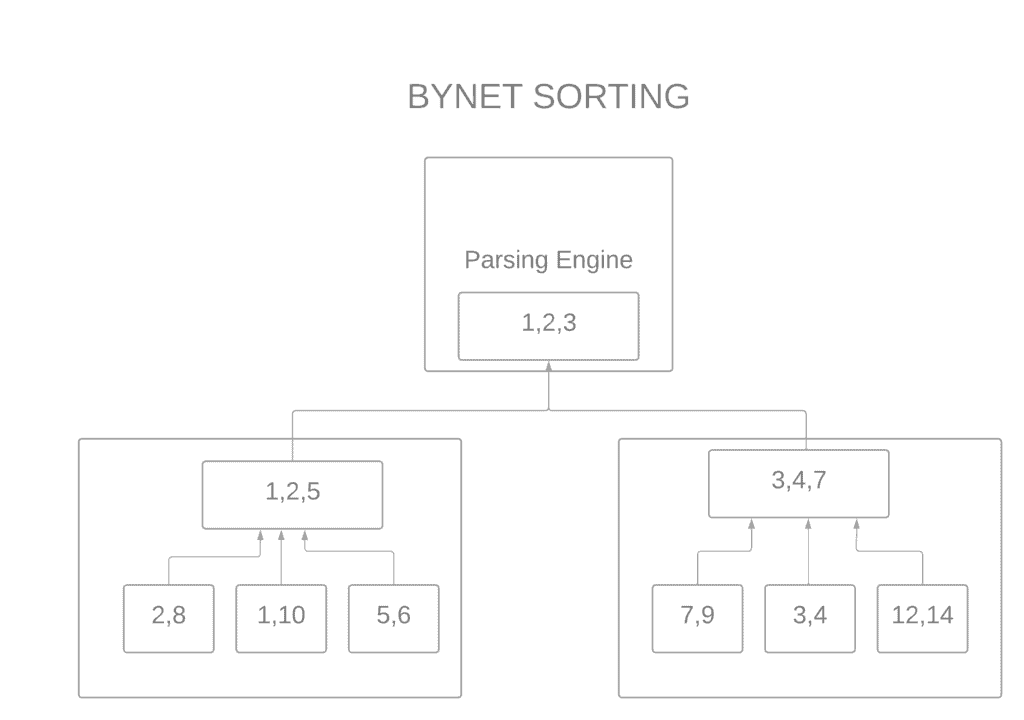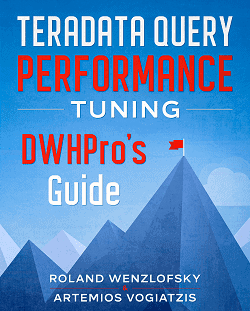
The Parsing Engine
The Parsing Engine (PE) is a critical component of the Teradata system, responsible for receiving and validating user requests, generating execution plans for queries, query optimization, and query dispatching. This component's function is essential to the performance of the Teradata system, as it is responsible for parsing, validating, and optimizing SQL queries to produce the most efficient execution plan.
When a user submits a SQL query to Teradata, the Parsing Engine receives the query, validates the syntax, and creates a parse tree of the query components. The Parsing Engine then converts the parse tree into a query execution plan by selecting the most efficient query plan based on the available system resources and data distribution. The execution plan is a step-by-step guide that outlines how the query will be executed, including the tables to be accessed, the order in which the tables are accessed, and the type of join used to access the data.
The Query Optimizer is an integral part of the Parsing Engine that performs query optimization. The optimizer uses a cost-based approach to determine the most efficient query plan based on the available system resources and data distribution. The cost-based approach uses a series of algorithms to analyze the execution plan's estimated cost and select the most efficient execution plan.
Once the execution plan is determined, the Parsing Engine dispatches the query to the Access Module Processors (AMPs) responsible for data retrieval and manipulation. The Parsing Engine also monitors query execution, tracking the query progress and returning query results to the user.
In summary, the Parsing Engine is responsible for receiving and validating user requests, generating execution plans for queries, query optimization, and query dispatching.
The BYNET
The BYNET is the backbone of Teradata's database, facilitating seamless communication between its components. Comprised of multiple virtual processors, Teradata relies on the BYNET for interaction between parsing engine processes and Access Module Processors (AMPs), ensuring efficient query executions. The BYNET is responsible for communication between and within a single node through software BYNET. In this article, we will delve into the importance of BYNET, its key capabilities, and its role in optimizing the Teradata architecture.
Facilitating Communication and Load Balancing
The BYNET is a high-speed network connecting all Teradata system nodes, enabling efficient data distribution and queries. As a shared resource, multiple nodes can use the network simultaneously. The BYNET operates using a two-layer network topology, with a primary and backup BYNET connected to each node, ensuring fault tolerance in case of hardware or network failures. The software BYNET maintains seamless communication among the components within a single node.
Key Capabilities of the BYNET
Multi-AMP Query Coordination and Load Balancing: The BYNET enables effective coordination among AMPs working in parallel on the same query, both between nodes and within a single node. The Parsing Engine determines the best AMPs to execute the query based on data distribution and system resources, sending the query to the selected AMPs via the BYNET. This ensures that the query is distributed evenly across the system, maximizing load balancing and overall performance.
Fault-Tolerant Design
The BYNET's fault-tolerant design uses redundancy and failover mechanisms to maintain system operations in case of hardware or network failures. The backup BYNET acts as a failover mechanism in case of primary BYNET failure, ensuring system reliability. The software BYNET within a single node also contributes to the fault-tolerant design.
Additional Services
Beyond its primary role in facilitating communication and load balancing, the BYNET provides additional services such as time synchronization, cluster management, network monitoring, and final answer set ordering.
Final Answer Set Ordering
One of the most impressive features of BYNET is its ability to return very large sorted answer sets effortlessly. In most database systems, sorting a large final answer set is costly due to the need for several sub-sorts and data merges. This process can be I/O-intensive and time-consuming, often involving the writing and reading of intermediate data sets.

The BYNET is aware of the parallelism of the AMPs and recognizes that each AMP has built up a small sorted answer set in a buffer for its portion of the data at the end of a query. The BYNET reads the data from all AMPs simultaneously while maintaining the specified sorted order. The BYNET pulls data off the AMPs. The answer set emerges in sorted order and is returned to the client without ever having to land anywhere for one big sort/merge operation. This elegant and efficient compilation of the final answer set across parallel units bypasses I/O-intensive routines and speeds up query completion. Another huge performance advantage is that only the rows returned to the client need to be sorted and never the whole table's rows. If we cancel for example in SQL assistant the number of rows retrieved after 2000 rows sorting is only done for these 2000 rows (if an ORDER BY clause exists).
Teradata can avoid the serious consequences of database congestion because of the intelligence of BYNET. Each AMP works independently on its share of the work, but sometimes query work can be uneven across AMPs. An AMP experiencing a heavier load may sometimes need to catch up.
When an individual AMP approaches congestion, it will signal to the BYNET that it has more work than it can handle. In response, BYNET temporarily stops delivering messages to the AMP. Then as soon as the AMP has worked off its backlog, BYNET messages automatically flow again. The BYNET regulates message sending to prevent overloading a single AMP, thus protecting the throughput of the entire platform. The key advantage this approach offers is scalability. Control over the flow of work occurs deep inside the database. Each AMP independently works with the BYNET to manage itself, with little overhead and no coordination with other AMPs. The number of AMPs can increase hugely, and congestion control works as efficiently.
The AMP
Access Module Processors (AMPs) are the heart of the Teradata architecture, responsible for data storage and retrieval. Understanding the AMP's role in the Teradata system is essential for optimizing the system's performance and ensuring efficient data access. In this article, we will explore the key features of the AMP and how it works in the Teradata architecture.
AMP stands for Access Module Processor, a type of node in the Teradata system responsible for data storage and retrieval. Each AMP is responsible for a portion of the system's data, with data distribution across the AMPs done using hashing.
The AMP is a shared-nothing architecture, meaning each AMP operates independently and does not share resources with other AMPs. This architecture allows for the parallel processing of queries across multiple AMPs, greatly improving query performance and scalability.
How does the AMP work?
Each AMP is responsible for data storage and retrieval for a portion of the system's data, with data distribution across the AMPs done using hashing. When a query is submitted to Teradata, the Parsing Engine determines which AMPs are required to execute the query based on the data distribution and system resources.
The Parsing Engine then sends the query to the selected AMPs via the BYNET, and each AMP executes its portion of the query in parallel with the other AMPs. The AMPs use an indexing structure to locate the required data efficiently, minimizing the need for disk I/O operations.
One key feature of the AMP is its ability to perform parallel processing of queries across multiple AMPs. This architecture allows for high scalability and performance, making Teradata an ideal system for large-scale data warehousing and analytics.
In addition to its primary role in data storage and retrieval, the AMP performs other tasks such as system-level operations like database backups, restores, and metadata management, and even character set conversions.
AMPs are a critical Teradata architecture component responsible for data storage and retrieval. By utilizing a shared-nothing architecture and parallel processing across multiple AMPs, Teradata can handle even the most demanding data warehousing and analytics workloads. Understanding the key features of the AMPs, BYNTE, and the Parsing Engine and how they work together in the Teradata architecture is essential for optimizing the system's performance and ensuring efficient data access.


